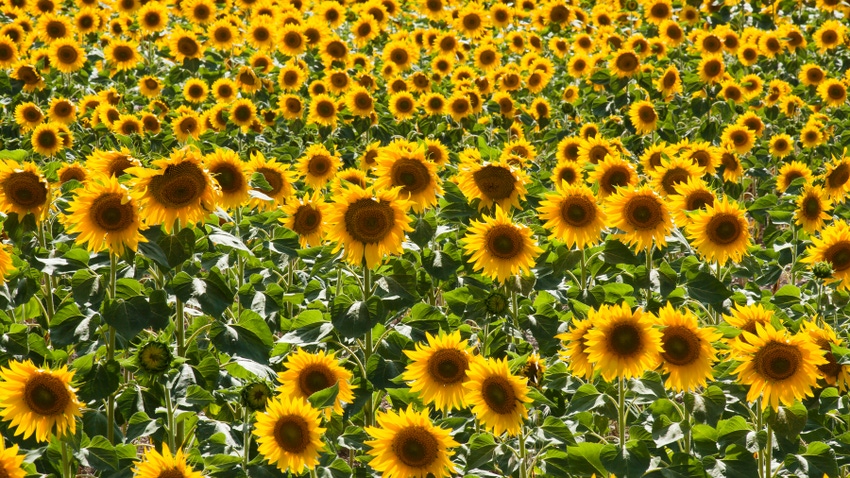
According to USDA, growers intend to plant 1.36 million acres of sunflowers in 2023, down 20% from 2022. Compared with last year, growers in seven of the eight major sunflower-producing states expect a decrease in sunflower acreage this year.
The largest decrease in planted area from last year is expected in South Dakota. Area intended for oil-type varieties, at 1.2 million acres, is down 22% from 2022, with non-oil varieties estimated at 158,000 acres, up 10% from last year.
The estimate for oil-type varieties was considerably lower than industry expectations. Oil crushers and bird food buyers were looking for a 10% to 15% increase in acres. Non-oil sunflower acres were in line with most traders’ thoughts.
USDA also reported sunflower stocks in all positions as of March 1. Seed stocks totaled 950 million pounds, up 5% from March 1, 2022. All stocks stored on farms totaled 615 million pounds, and off-farm stocks totaled 335 million pounds.
Stocks of oil-type sunflower seed were 815 million pounds, up 5% from March 1, 2022. Of this total, 572 million pounds were on-farm stocks, and 243 million pounds were off-farm stocks.
Non-oil sunflower stocks totaled 136 million pounds, up 7% from last year at this time, with 43 million pounds stored on the farm and 93 million pounds stored off the farm. Increased stocks were expected by traders given last year’s near-record oil-type yield and overall excellent production.
Benefits to diversification
With lower-than-anticipated acres, diversifying market risk with some oil sunflower acres could be a good option in 2023. New-crop oil sunflower prices are above historical averages, with oil crushers offering Act of God and cash contracts. Keep in mind that oils also receive a 2% price premium for each 1% of oil content that is over 40%. At current new-crop prices, that can add significantly to the final price when delivered.
If there are any planting delays this year, another advantage to having late-season planted crops like sunflower in your rotation is that they can be planted until late June. The final planting dates for crop insurance purposes for sunflower vary by state and county:
North Dakota, June 10 or 15
South Dakota, June 15 or 20
Minnesota, June 15
After these dates, the coverage is reduced by only 1% per day. The actual final date that sunflowers can be planted is anywhere from 20 to 25 days after this date depending on the county. To find the final planting date by county, go to sunflowernsa.com/growers/crop-insurance.
There is still time to take advantage of the market opportunities that sunflowers can offer. Late-season planted crops like sunflower can perform well, and markets will reward that production.
To keep up with market news and prices, go to sunflowernsa.com. The NSA website also has a link to buyers on it for you to contact processors of oils, confections, hullers and bird food to contract 2023 acres.
Sandbakken of Mandan, N.D., is the executive director of the National Sunflower Association.
Read more about:
SunflowersAbout the Author(s)
You May Also Like






